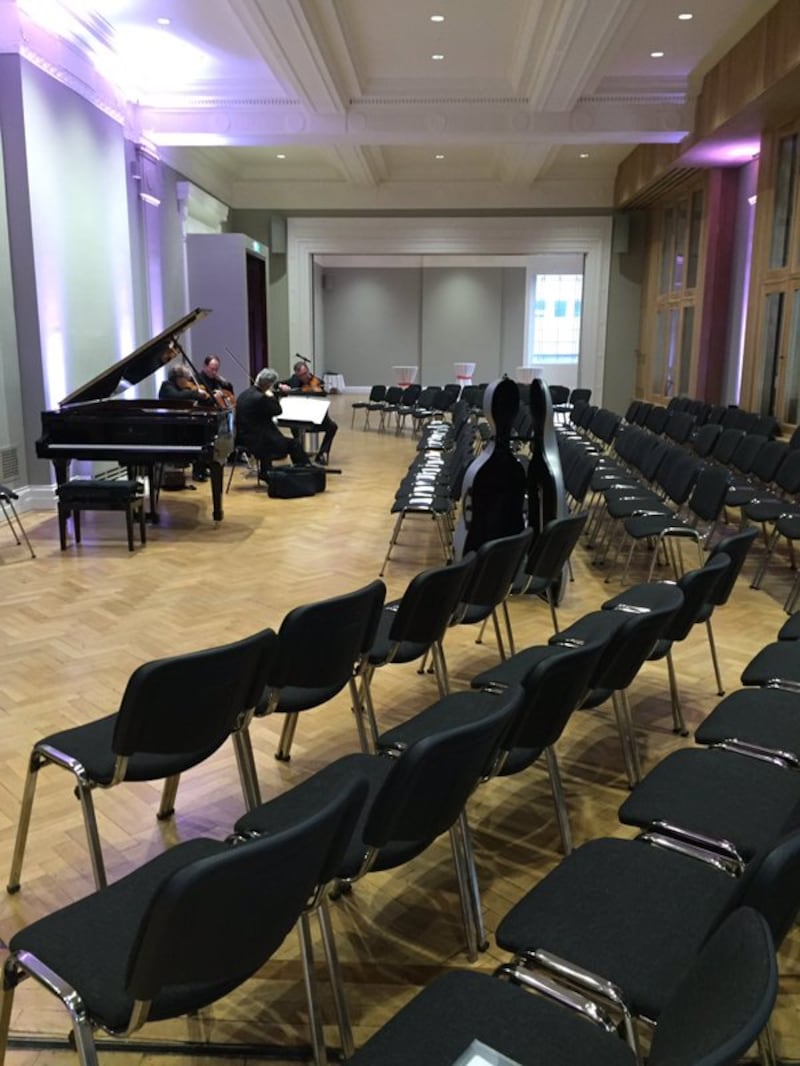Last May the announcement of the Composing the Island festival was followed by an outcry about the representation of women in that survey of 100 years of music in Ireland.
Then, in January, RTÉ announced Nathalie Stutzmann as principal guest conductor of the RTÉ National Symphony Orchestra with effect from September.
At the end of last month the National Concert Hall unveiled its Female Conductor Programme, a 10-month project, supported by Grant Thornton, that is "designed to coach, mentor, encourage and promote talented female conductors at the outset of their careers".
Alice Farnham, who trained in St Petersburg under Ilya Musin and is behind the Women Conductors with the Royal Philharmonic Society, in Britain, will guide six participants through the new programme, which will culminate in a concert with the RTÉ NSO in the summer of 2018.
Last week's announcement of the NCH's 2017-18 International Concert Series revealed that the City of Birmingham Symphony Orchestra will open the series, on August 31st, with a programme of Peteris Vasks, Elgar (the Cello Concerto with Gautier Capuçon) and Rachmaninov under the orchestra's Lithuanian music director, Mirga Gražinyte-Tyla.
Gražinyte-Tyla will not be the season's only woman conductor. On February 8th Emmanuelle Haïm brings her period-performance ensemble Le Concert d'Astrée from France to Dublin for the first time in a Baroque Heroines programme featuring music by Charpentier and Rameau with mezzo soprano Magdalena Kožená.
The season's third woman conductor will be Greek. On June 12th, 2018, Stamatia Karampiniwill conduct the Würth Philharmoniker, an orchestra so new it has yet to give its first concert. It was founded by Reinhold Würth "in an ongoing effort to build a cultural legacy both in German communities and across the world".
Its Dublin debut will see the return of Maxim Vengerov, who will conduct Johann Strauss's Fledermaus Overture and Shostakovich's Tenth Symphony, and take up his violin to play Bruch's Violin Concerto No 1 and Saint-Saëns's Introduction and Rondo Capriccioso with Karampini on the podium.
The Composing the Island outcry was about the representation of women composers, not women conductors. And none of the new developments has yet done anything to address that issue. Just one woman composer features in the programmes so far announced for the International Concert Series. Nox Vitae, by the Ukrainian-born, Estonia-resident Galina Grigorjeva, features in the Estonian Philharmonic Chamber Choir's programme under Kaspars Putnins on January 31st.
The season also includes a return by the Academy of St Martin in the Fields under Joshua Bell (January 20th, 2018), three concerts by the Czech Philharmonic Orchestra (Jirí Belohlávek conducting Dvorák on February 17th, 2018, and Smetana on February 18th, with a family concert on the Sunday afternoon), Simon Rattle conducting the London Symphony Orchestra in Mahler's Ninth Symphony (April 18th, 2018), return visits by the pianist Philippe Cassard(March 15th, 2018) and the Bournemouth Symphony Orchestra (May 10th, 2018) and a first visit by the Belgian choir Vox Luminis (May 23rd, 2018).
Before all of those there is a return visit from the Tallis Scholars (October 5th), a pairing of the Borodin Quartet with the pianist Barry Douglas (November 8th), the City of London Sinfonia under Michael Collins with the pianist Michael McHale (November 11th, with a family concert the next day), and the Irish debut of one of the planet's hottest pianists, Daniil Trifonov (December 5th). Full details and booking at nch.ie.

Put the performers back where they belong
It’s just over a year since the renovated Kevin Barry Recital Room at the National Concert Hall was opened by Taoiseach Enda Kenny and Minister for Arts Heather Humphreys.
The improvements have been obvious from the start. It has been nicely spruced up, the lighting, seating and soundproofing have all been improved, and the dryness of the acoustic has been tempered.
But, a year on, the space is not satisfactory. Before renovation the intrusive noises came from outside the building, from passing traffic, wind and rain and, occasionally, the chatter of concertgoers taking the air during the interval at an event in the main auditorium.
Those sounds are no longer a problem. The issue is that conversations from the other side – the corridor that leads to the room – still manage to intrude on the music. The soundproofing provided by the two pairs of doors used by public and performers to enter and leave the room is risible.
Those doors create other problems, too. Their movement is not soundproofed, so if anyone tries to enter during a performance – it happens more often than you would expect – the doors clack off each other when they close. And, still on the subject of noise, the air conditioning sometimes makes its presence pronounced for people seated in the back row.
The biggest problem, however, is the sound. The decision to place performers on the long axis of the room has great benefits in terms of visual and physical intimacy between musicians and listeners. But it’s a not uncommon experience for everything to sound too loud. It’s a pretty deadly effect, and the unfortunate outcome is that it makes performers seem insensitive to their listeners.
It's long past time to return to the more conventional layout. The few concerts I've heard that used that layout seemed to benefit hugely from the change. After all, there's probably a very good reason why stages are placed where they normally are. mdervan@irishtimes.com













